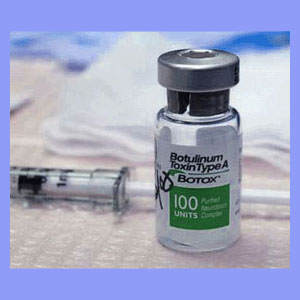
Botox for sciatica is a relatively new application of this versatile medical treatment. Botox, also called botulinum toxin, is a bacterial poison which was first used for cosmetic applications many years ago. Although originally used in aesthetic medicine, Botox has transitioned into the general healthcare marketplace.
More recently, Botox has made the move to accepted medical therapy for a full range of painful health issues, including sciatica lower back pain.
This essay will detail how Botox works for sciatica, as well as what patient might expect from treatment. We will investigate the positive and negative considerations of using Botox for treating chronic pain.
Using Botox for Sciatica
Botox is given via injection directly into the painful sites of the back, buttocks or legs. Botox is a paralyzing agent which helps to eliminate muscular pain and spasms in many affected sciatica patients.
Botox is not a long-term solution for any health issue, since its effects are only temporary. Subsequent rounds of treatment may provide shorter duration relief than the original injection. However, when compared to some other injection therapies, many patients prefer the relief they feel from Botox and use these shots as one method of taking the edge off their chronic sciatica symptoms.
When utilized correctly and safely, patients might expect to enjoy respite from the worst of their pain and cramping for a few months at a time. Since the effects are localized, the patient can often lessen their reliance on oral pharmaceutical products, which is a huge health benefit.
Botox Injection Indications for Pain Management
Botox is a poison and is therefore risky to work with. Luckily, the product is so popular in medical use that most doctors are experts in its application.
Botox blocks neurological signals at the junctions where nerves and muscles meet, making the muscles incapable of contracting. This is fantastic news for sufferers whose primary source of pain is uncontrolled spasms.
Botox is far more useful for muscular sources of sciatica than for spinal causations. This makes it great for cases of suspected piriformis contraction leading to pseudo-sciatica.
Botox can also work well when the expression is caused by ischemia of the muscular tissues. In these circumstances, Botox will not stop the ischemia, but it will cut down on the acute pain and muscular spasms associated with the condition.
Botox for Sciatica Benefits
Botox is not a permanent solution to virtually any sciatic nerve complaint. However, for some patients, it may offer excellent symptomatic treatment while they search for a real curative answer. Botox does not demonstrate the health risks of continuing pharmaceutical drug use, and as long as it is administered correctly, complications are rare and usually minor.
If you are looking for pain relief from mostly muscular back and leg pain, then consider investigating Botox while you work towards a real cure. Just remember that effects will wear off and then you will need to come up with another therapy modality or repeat the injection process over and over.





